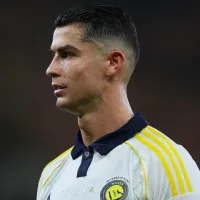Around 30 years ago, both MLS and the Japanese J-League started up as entirely new domestic leagues. Since then, both have undergone considerable change and expansion. For the J1 League, 10 teams competed in the 1992 season. Now, there are 20 teams in the top flight. Likewise, MLS has experienced massive growth after starting the 1996 MLS season. That also began with 10 teams, and MLS will have 30 teams in the 2025 season. Yet, that growth has led leagues down remarkably different paths.
Major League Soccer remains a closed system without promotion and relegation. The 30 teams in 2025 will compete against select teams with minimal consequences for those having poor seasons. On the other hand, the J1 League has relegation. Therefore, the three teams finishing at the bottom of the league drop down to the J2 League. Granted, the mere presence of promotion and relegation does not mean any league is stronger. However, 30 years on from their inception, the two leagues are worth discussing in terms of how they fare against one another.
In terms of which league is stronger, one place to look could be the Opta Power Rankings. A formula to determine the strength of every professional club in the world provides an aggregate ranking for each domestic league in soccer. MLS stands as the 13th strongest league in the world, as of April 2024. At that same time, the J1 League sat 22nd. That may not be the best metric, though, so let’s look at some of the more tangible things to come out of the two leagues.
How MLS compares against the J1 League
| J1 League | Major League Soccer | |
| First year of competition | 1992 | 1996 |
| Promotion and relegation? | Yes | No |
| Average attendance (in 2023) | 18,993 | 22,111 |
| Continental cup wins | 6 | 3 |
| Number of active players in top-five European leagues to make debut in league | 18 | 7 |
| Current national team squad from domestic league’s clubs | 7 | 4 |
| Number of different league champions | 11 | 15 |
| Gross transfer spending in 2024 | $17.86 million | $296.76 million |
Even though the Opta Power Rankings put Major League Soccer ahead of the J-League, many other areas favor the Japanese division. Looking at on-pitch performance, the J1 League appears to produce more talent. This does not inherently mean better players, but perhaps more of an abundance of them. As seen, 18 current players across the Premier League, Ligue 1, LaLiga, Bundesliga and Serie A first made their professional debuts in the J1 League. It is important to note that this only applies to Japanese-born players, as well.
Likewise, only seven Americans in those same leagues made their career starts in MLS. Christian Pulisic, Gio Reyna and Yunus Musah have never played in MLS. The likes of Weston McKennie and Tyler Adams started in MLS, though.
The above comparison is particularly timely because of the Red Bull CEO’s comments this week that MLS is developing too slowly.
Product vs. Power
Even though MLS may fall short in comparison to the J1 League in regularly producing European players, the 30 years of the two competitions have produced different looks. Promotion, relegation, and the open system in Japan have led to fewer different champions than Major League Soccer. There are pros and cons to this, including increased parity and diverse interest. However, the J1 League is known for its fan atmosphere and performances in continental competition. Even though MLS may have bigger stadiums and more attendees, the J1 League experience is exciting.
Still, the on-field play dictates what constitutes an objectively better league. By many accounts, MLS has better players. According to Transfermarkt, the J1 League’s most valuable player is Hayao Kawabe of Sanfrecce Hiroshima. According to the website, most clubs would pay around $5.5 million for the midfielder. MLS has 33 players the website deems more valuable than Kawabe. The headline of that is Lionel Messi.
In fairness, the J1 League has shifted away from buying big names in the sport. In the past, it brought in Andres Iniesta, Freddie Ljungberg, Hristo Stoichkov, Fernando Torres and David Villa. Those days are gone, and the J1 League has developed players rapidly. That may
explain why it exports so many top talents to Europe. Among the 18 active players to come up through the ranks in Japan are Kaoru Mitoma, Takehiro Tomiyasu and Daichi Kamada.
Impact on national team success
How has Japan faired in recent World Cups compared to the United States Men’s National Team? Let’s take a look to see how far the national teams went in the competition.
| Japan | USA | |
| World Cup 2022 | Round of 16 | Round of 16 |
| 2018 | Round of 16 | Didn’t qualify |
| 2014 | Group Stage | Round of 16 |
| 2010 | Round of 16 | Round of 16 |
| 2006 | Group Stage | Group Stage |
| 2002 | Group Stage | Quarterfinals |
| 1998 | Group Stage | Group Stage |
| 1994 | Didn’t qualify | Round of 16 |
PHOTOS: IMAGO














